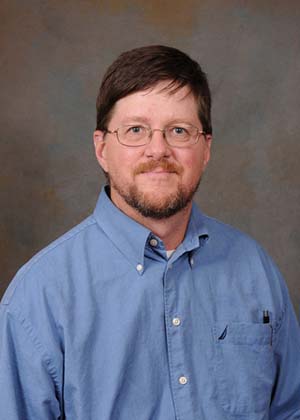Ronald W. Falta, Jr., professor of hydrogeology in Clemson University’s environmental engineering and Earth sciences department, is receiving the 2020 Honor Award for University Research, given by the American Academy of Environmental Engineers and Scientists. He is being recognized for his work in environmental remediation of hazardous waste sites, geologic sequestration of carbon dioxide, and mathematical modeling of contaminant transport and remediation.

According to the Groundwater Foundation, there are thought to be over 20,000 known abandoned and uncontrolled hazardous waste sites in the U.S., and the numbers grow every year. It is estimated that more than 10 million storage barrels containing different substances are stored underground in the United States. Over time, storage containers can erode, resulting in contaminants moving through the soil and reaching the groundwater, making it unfit for human use.
Falta has dedicated his life and career to studying contaminant transport and remediation. He created the widely used software Remediation Evaluation Model for Chlorinated Solvents, which is known as REMChlor. This program has been used extensively all over the world. More recently he has enhanced the software with an important update. Falta has developed a new mathematical method to incorporate the effects of matrix diffusion on predicting the behavior of groundwater contaminant plumes.
As a plume of groundwater pollution moves through zones of higher permeability, a diffusion gradient is established that drives the pollutant into adjacent zones of lower permeability. Over time these lower permeability zones can store significant amounts of dissolved pollutants. As remediation removes contaminant concentrations from more permeable zones, a reversal of the diffusion gradient results in “back diffusion” in which dissolved contaminants move back into the areas of higher permeability. This phenomenon results in persistent levels of contaminants that can impact groundwater wells long after attempts at aquifer remediation have been completed. Falta’s updated model allows for consideration of the back diffusion tendency. The new software is called REMChlor-MD, and it is available free of charge from the Department of Defense Environmental Security Technology Certification Program.
David Freedman, chair of Clemson University’s Department of Environmental Engineering and Earth Sciences, said, “The elegance of Falta’s work lies with the fact that his approach to modeling takes a highly complex system and makes it available in a user-friendly manner to practitioners. He continues to make important contributions to our understanding of how pollutants behave in complex groundwater systems, many of which are used as sources of drinking water.”
Falta earned his Bachelor of Science and Master of Science in civil engineering and his Ph.D. in material science and mineral engineering from the University of California, Berkeley.
Get in touch and we will connect you with the author or another expert.
Or email us at news@clemson.edu

